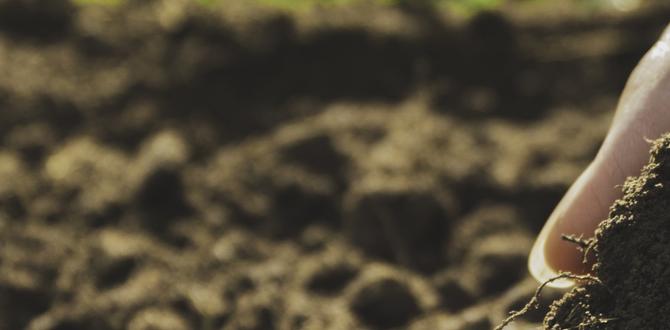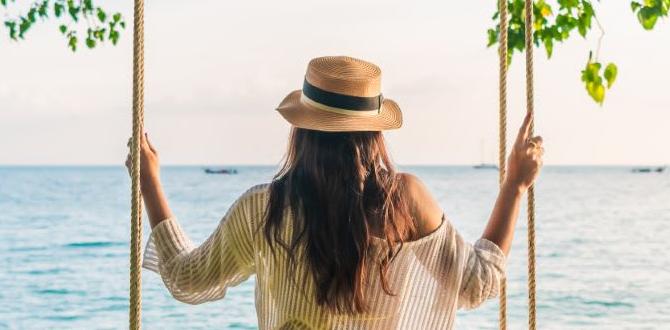Want to explore the stunning Bay of Islands without the throngs of tourists? Follow this essential guide for a tranquil itinerary, focusing on peaceful beaches, hidden coves, and a slower pace. We’ll show you how to discover the magic of this New Zealand paradise, ensuring comfort and relaxation every step of the way.
The Bay of Islands is a world-renowned gem, famous for its sparkling waters, lush islands, and rich history. But let’s be honest, sometimes the most popular spots can feel a little too popular, especially during peak season. If you dream of serene beaches, quiet kayaking adventures, and soaking in the natural beauty without bumping into crowds, you’re in the right place. Traveling doesn’t have to mean constant busy-ness; it can be about finding those peaceful pockets where you can truly unwind and reconnect. This guide is designed to help you craft a Bay of Islands itinerary that prioritizes tranquility and offers a refreshing way to experience this stunning corner of New Zealand. We’ll walk you through finding those less-traveled paths and making the most of your peaceful escape.
—
Discovering Serenity: Your Bay of Islands No-Crowds Itinerary
The Bay of Islands in New Zealand offers breathtaking natural beauty, from its turquoise waters and secluded coves to its historical significance. While it’s a beloved destination, it’s entirely possible to craft an itinerary that allows you to experience its magic without the overwhelming crowds. The key is smart planning, choosing quieter times, and exploring beyond the most famous hotspots. This guide is your roadmap to a peaceful, rejuvenating getaway in one of New Zealand’s most iconic locations.
Imagine waking up to the gentle sound of waves on a less-frequented beach, kayaking through crystal-clear waters with only seabirds for company, or exploring a charming village at your own unhurried pace. That’s the Bay of Islands experience we’re aiming for. It’s about savoring every moment, and that’s where a well-thought-out itinerary comes in.
Why Choose a No-Crowds Approach?
Many of us travel to escape the hustle and bustle of everyday life. While popular destinations are popular for a reason, experiencing them in solitude or with minimal crowds can enhance the entire journey.
- Deeper Connection: Without constant distractions, you can truly connect with the natural environment and local culture.
- Enhanced Relaxation: Peace and quiet are key to genuine relaxation. Avoiding peak times and places allows for a more calming experience.
- Better Photography: Capture those postcard-worthy shots without a hundred other people in the frame.
- Authentic Encounters: Smaller crowds often lead to more meaningful interactions with locals and a more authentic feel.
- Flexibility: Traveling off-peak or to lesser-known spots often means more spontaneous opportunities and less need to book everything far in advance.
When to Visit for Fewer Crowds
Timing is everything when it comes to avoiding crowds. While the Bay of Islands is beautiful year-round, certain periods are significantly quieter.
- Shoulder Seasons: Aim for springtime (September to November) or autumn (March to May). The weather is generally pleasant, and the summer holiday crowds have dispersed.
- Mid-Week Travel: If your timing allows, travel during the week rather than on weekends. Many activities are less busy on Tuesdays, Wednesdays, and Thursdays.
- Avoid Peak Holidays: Steer clear of major school holidays (mid-December to late January) and public holiday weekends if crowd avoidance is your top priority.
Where to Base Yourself for Peace and Quiet
While Paihia and Russell are the main hubs, they can also be the busiest. Consider these alternatives for a more serene base:
- Opua: A charming coastal village just south of Paihia, known for its marina and relaxed atmosphere. It’s a great jumping-off point for boating and water activities.
- Kerikeri: A bit further inland but still very close to the action. Kerikeri offers a vibrant arts and crafts scene, historic sites like the Stone Store, and a more local feel.
- Further Afield: For the ultimate escape, consider staying in smaller coastal communities like Mangonui (known for its fish and chips!) or Rawene on the Hokianga Harbour side, which offers a different, equally beautiful perspective of Northland.
Crafting Your 3-Day No-Crowds Itinerary
This itinerary focuses on experiencing the highlights of the Bay of Islands with a mindful approach to avoiding crowds. It balances iconic sights with off-the-beaten-path gems.
Day 1: Coastal Charms and Island Whispers
Morning (9:00 AM – 12:00 PM): Explore Opua & Coastal Walk
Begin your day in the tranquil village of Opua. Stroll around the marina, watching the boats. Afterward, take a section of the Opua Forest walk. This can offer lovely forest scenery and birdlife without the dense crowds often found on more famous trails. Pack some snacks and water.
Lunch (12:30 PM – 1:30 PM): Picnic at a Secluded Beach
Instead of busy cafes, pack a delicious picnic from a local bakery or supermarket. Head a little north of Paihia towards Waitangi, or explore the quiet coves around the southern parts of the bay for a peaceful lunch spot.
Afternoon (2:00 PM – 5:00 PM): Kayaking in a Quiet Cove
Rent a kayak from a less busy rental operator or book a guided tour that specifically targets quieter areas. Explore the sheltered waters around Urquhart Bay or Waewaetoria Bay. These are often less frequented by large tour boats, offering a more intimate experience with the marine environment.
Evening (6:00 PM onwards): Dinner in Kerikeri
Drive to nearby Kerikeri. While it has popular spots, you can often find quieter, excellent restaurants in its charming town center. Enjoy local produce and a relaxed atmosphere. Consider visiting the historic Stone Store and Keri Keri Mission before dinner for a less crowded historical immersion.
Day 2: Historic Whispers and Hidden Bays
Morning (9:30 AM – 12:30 PM): The Waitangi Treaty Grounds (Off-Peak Strategy)
While Waitangi is a must-see for its historical significance, visit it early in the morning on a weekday, ideally outside of peak season. This allows you to absorb the history and explore the grounds with more personal space. Take your time to understand the foundational moments of New Zealand.
Pro Tip: Check the Waitangi Treaty Grounds official website for opening hours and potential event schedules that might affect crowd levels.
Lunch (1:00 PM – 2:00 PM): Casual Lunch in Paihia (with a caveat)
Paihia’s main street can get busy. For a quieter lunch, explore some of the cafes a block or two back from the waterfront, or grab takeaway and head to a less central beach like Te Tii Bay nearby.
Afternoon (2:30 PM – 5:00 PM): Explore a Quieter Island – Urupukapuka Island Sanctuary
Instead of the busier boat tours to Hole in the Rock, opt for a ferry or water taxi to Urupukapuka Island. This island is part of the Department of Conservation’s estate and offers stunning walking tracks through regenerating native bush. You can find quiet beaches for relaxation and swimming. The trails are well-maintained, offering a peaceful natural escape.
External Link: Learn more about Urupukapuka Island and its walking tracks on the Department of Conservation website.
Evening (6:30 PM onwards): Sunset Views and Local Eateries
Find a quiet spot along the coast to watch the sunset. Alternatively, explore the dining scene in Russell early in the evening, before the main rush, for a more serene dining experience in this historic town.
Day 3: Artistic Flavors and Coastal Exploration
Morning (10:00 AM – 1:00 PM): Kerikeri’s Art Trail and River Walk
Spend your morning exploring Kerikeri’s artistic side. Visit local galleries and studios at your leisure following the Kerikeri Art Trail listings. Afterwards, enjoy a peaceful walk along the Kerikeri River, perhaps to the Rainbow Falls. This offers a refreshing natural immersion away from the coastal crowds.
Lunch (1:00 PM – 2:30 PM): Cafe Culture in Kerikeri
Kerikeri boasts a wonderful selection of cafes that are often less crowded than those right on the waterfront of Paihia. Enjoy a relaxed lunch and maybe a coffee tasting.
Afternoon (3:00 PM – 5:00 PM): Drive to an Overlook or a Less-Visited Bay
Take a scenic drive to a viewpoint like Flagstaff Hill (though it can get busy, early or late is best), or explore a smaller, less accessible bay. Consider a drive towards the north for bays like Matauri Bay or an exploration of the Waipoua Forest (though this is further afield, it’s a truly immersive, quiet experience).
Evening (6:00 PM onwards): Farewell Dinner
Choose a restaurant in a smaller town like Opua or even a local pub in a village adjacent to your accommodation for a final, relaxed meal. Reflect on your peaceful discoveries.
What to Pack for Comfort and Convenience
Traveling comfortably, especially when aiming for a relaxed pace, means packing smart. Think about layers for changeable weather, comfortable footwear for those scenic walks, and essentials for picnics.
Essential Packing List:
Comfortable Walking Shoes: Essential for exploring those walking tracks and coastal paths.
Swimwear & Towel: Many quiet coves offer opportunities for a refreshing dip.
Sun Protection: Sunscreen, hat, and sunglasses are a must.
Insect Repellent: Especially if you plan to hike in forested areas.
Reusable Water Bottle: Stay hydrated and reduce plastic waste.
Lightweight Rain Jacket: Weather can change quickly in coastal areas.
Snacks & Picnic Supplies: For spontaneous, peaceful meals.
Camera: To capture the serene beauty.
A Good Book: For those quiet moments on the beach.
Toiletry Bag Essentials: Including any personal comfort items. For travelers who might need additional support, discreet and reliable adult and child diapers can offer peace of mind for longer excursions, ensuring you can focus on enjoyment without worry. Brands like [Brand Name Example 1] or [Brand Name Example 2] offer breathable, comfortable options for extended wear. Staying prepared ensures your travel is as stress-free as possible.
Activities for the Tranquil Traveler
Beyond the itinerary, here are some ideas that fit the no-crowds philosophy:
- Bird Watching: The Bay of Islands is rich in birdlife. Pack binoculars and spend time observing native and migratory species.
- Stargazing: Away from city lights, the night sky is incredible. Find a quiet beach or viewpoint and marvel at the stars.
- Community Art Galleries: Discover local talent in smaller towns. These are often quiet and offer a chance to chat with artists.
- Local Farmers Markets: If you align your visit with a market day (check local schedules), you can experience local life and pick up delicious produce for picnics in a relaxed setting.
- Self-Guided Historical Walks: Explore the heritage sites at your own pace, taking time to read plaques and absorb the atmosphere without feeling rushed.
Transportation Tips for a Peaceful Journey
Getting around the Bay of Islands without stressing about traffic or parking is part of the no-crowds experience.
- Rental Car: This offers the most flexibility to explore smaller bays and villages. Book in advance, especially if traveling during shoulder seasons.
- Local Ferries & Water Taxis: These are excellent for accessing islands and different parts of the bay without dealing with mainland traffic.
- Cycling: For exploring local towns like Paihia or Kerikeri, cycling can be a relaxed and pleasant way to get around.
- Walking: Many areas are best explored on foot. Plan your accommodation and activities to maximize walking opportunities.
Table: Comparing Popular vs. Peaceful Bay of Islands Activities
To help visualize the difference, here’s a comparison:
| Popular Activity Examples | No-Crowds Alternative/Approach | Why It’s Peaceful |
|---|---|---|
| Full-day Hole in the Rock Cruise (peak hours) | Morning or late afternoon ferry to Urupukapuka Island; Kayaking in a quiet cove. | Smaller boats, less traveled destinations, self-paced exploration. |
| Busy Paihia Waterfront cafes during lunch | Picnic lunch at a secluded beach; Cafes in Kerikeri or Opua. | Away from tourist hubs, relaxed setting. |
| Large group tours to historical sites | Early morning or weekday visit to Waitangi Treaty Grounds by yourself or with a small group. | Fewer people, more personal reflection. |
| Busy beaches with limited space | Exploring Urupukapuka Island’s quieter bays; Driving to lesser-known northern beaches. | Island sanctuaries, hidden gems off the main routes. |
Embrace the Pace: Final Thoughts on Your Tranquil Escape
The Bay of Islands offers a wealth of beauty, and by approaching your visit with a focus on tranquility, you can unlock a truly special experience. It’s about seeking out those quiet moments, enjoying the natural splendor at your own speed, and creating memories that are deeply personal and refreshing. Remember that comfort and preparedness are key to enjoying these explorations, allowing you to fully immerse yourself in the serenity.
—
Frequently Asked Questions (FAQ)
What is the best way to avoid crowds in the Bay of Islands?
The best ways to avoid crowds are to visit during the shoulder seasons (spring and autumn), travel mid-week, explore lesser-known bays and islands, and opt for smaller group tours or self-guided activities rather than large-scale boat trips during peak times. Planning picnics also helps avoid busy lunch spots.
Is it possible to see the famous Hole in the Rock without crowds?
While the Hole in the Rock is a major attraction and will always draw people, you can experience it with fewer crowds by choosing an early morning or late afternoon tour, or by booking with smaller boat operators who may have more flexible schedules. Alternatively, appreciate its majesty from viewpoints like Cape Brett.
What are some good alternative islands to explore in the Bay of Islands besides the main tourist routes?
Urupukapuka Island is a fantastic choice, offering walking tracks and quiet beaches managed by the Department of Conservation. Other less developed islands can be accessed via private boat hire or water taxi for a truly secluded experience. Research which ones offer DOC facilities or public access.
What kind of food can I expect in the Bay of Islands, and are there quiet dining options?
The Bay of Islands offers fresh seafood, local produce, and a range of dining from casual cafes to fine dining. For quieter options, focus on restaurants in smaller towns like Opua or Kerikeri away from the main Paihia strip, or consider enjoying a scenic picnic with supplies from local markets or bakeries.
How can I make travel with children more comfortable and less stressful in the Bay of Islands?
For families, focusing on shorter activities, packing plenty of snacks and drinks, utilizing quiet beaches for playtime, and considering accommodations with amenities like pools or playgrounds can help. If managing continence needs for children or adults, discreet and comfortable adult or child diapers can provide security, allowing everyone to enjoy spontaneous outings and longer drives without worry. Brands known for absorbency and comfort, such as Depend or certain pediatric options, can be a lifesaver.
What essential items should I pack for a peaceful Bay of Islands trip?
Pack essentials for comfort and self-sufficiency: comfortable walking shoes, swimwear, sun protection, insect repellent, a reusable water bottle, a light rain jacket, and snacks. Bringing a good book for quiet beach time is also recommended. If managing personal continence needs, packing adequate, reliable adult or child diapers is crucial for peace of mind.
Are there any self-guided walking tours that are less crowded?
Yes, many walking tracks, especially within Urupukapuka Island Sanctuary or the Opua Forest, are excellent for self-guided tours. Kerikeri also offers lovely river walks. Research trails on the Department of Conservation website for details on difficulty and remoteness.
—
Conclusion
The Bay of Islands is a place of profound beauty, and by employing a few strategic choices, you can experience its magic without the typical tourist crush. This “no-crowds itinerary” is designed to guide you towards tranquil moments, serene landscapes, and a more personal connection with this spectacular region. From the quiet hum of the Opua marina to the peaceful trails of Urupukapuka Island and the artistic





